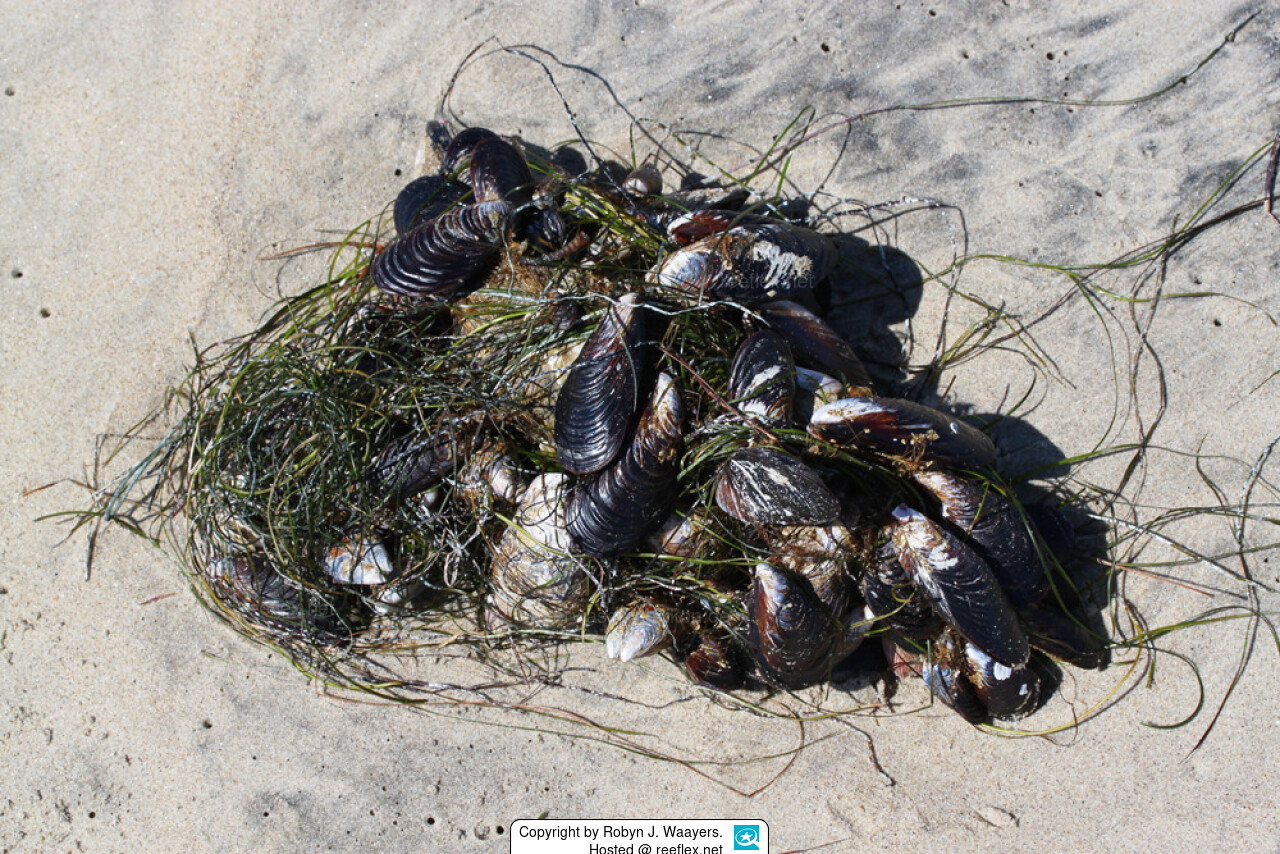Info
Conrad, 1837
Simialr to Mytilus trosselus & Mytilus galloprovincialis.
Synonyms:
Mytilus californicus
Mytilus canalis Lamarck, 1819
Mytilus edulis giganteus Nordmann, 1862
Mytilus zonarius Lamarck, 1819
Poisoning by mussels is one of the most frequent poisonings by marine animals worldwide!
Often one hears about poisoning by spoiled mussels, but this is mostly not true.
Mussels themselves are not poisonous, but they absorb the toxins through food and store them in their bodies for a while.
In the time from May to September poisonings by mussels occur particularly frequently, in the cold season it is actually hardly reported.
Poisonings have been observed particularly frequently with the following mussels:
Mytilus californianus Conrad, 1837.
Mytilus edulis Linnaeus, 1758
Ostrea edulis Linnaeus, 1758
Saxidomus gigantea (Deshayes, 1839)
Saxidomus nuttalli Conrad, 1837
Unfortunately, since edible mussels cannot be distinguished from poisonous mussels before consumption, it is recommended to boil mussels with sodium bicarbonate (/sodium hydrogen carbonate, NaHCO₃) for half an hour (1 tablespoon to one liter of water) before eating, as the mussel canning industry does.
How do the shellfish poisonings occur?
Mussels filter seawater and in the process ingest phytoplankton, especially algae, diatoms, and dinoflagellates, which can produce toxins under certain circumstances, for example, this is the case during times of annual algal blooms.
What to do in case of shellfish poisoning (mytilism)
All about types of poisoning, causes, signs, symptoms, complaints, diagnosis, complications, doctor consultation, treatment & therapy can be found at
Simialr to Mytilus trosselus & Mytilus galloprovincialis.
Synonyms:
Mytilus californicus
Mytilus canalis Lamarck, 1819
Mytilus edulis giganteus Nordmann, 1862
Mytilus zonarius Lamarck, 1819
Poisoning by mussels is one of the most frequent poisonings by marine animals worldwide!
Often one hears about poisoning by spoiled mussels, but this is mostly not true.
Mussels themselves are not poisonous, but they absorb the toxins through food and store them in their bodies for a while.
In the time from May to September poisonings by mussels occur particularly frequently, in the cold season it is actually hardly reported.
Poisonings have been observed particularly frequently with the following mussels:
Mytilus californianus Conrad, 1837.
Mytilus edulis Linnaeus, 1758
Ostrea edulis Linnaeus, 1758
Saxidomus gigantea (Deshayes, 1839)
Saxidomus nuttalli Conrad, 1837
Unfortunately, since edible mussels cannot be distinguished from poisonous mussels before consumption, it is recommended to boil mussels with sodium bicarbonate (/sodium hydrogen carbonate, NaHCO₃) for half an hour (1 tablespoon to one liter of water) before eating, as the mussel canning industry does.
How do the shellfish poisonings occur?
Mussels filter seawater and in the process ingest phytoplankton, especially algae, diatoms, and dinoflagellates, which can produce toxins under certain circumstances, for example, this is the case during times of annual algal blooms.
What to do in case of shellfish poisoning (mytilism)
All about types of poisoning, causes, signs, symptoms, complaints, diagnosis, complications, doctor consultation, treatment & therapy can be found at







 Robyn J. Waayers, USA
Robyn J. Waayers, USA







